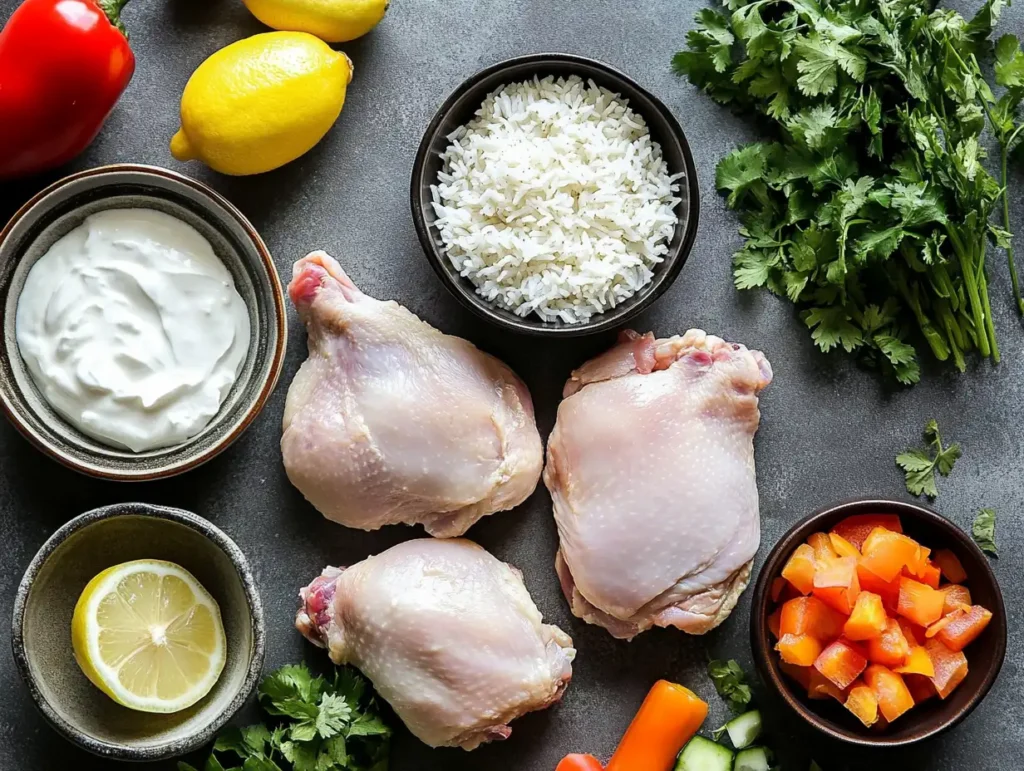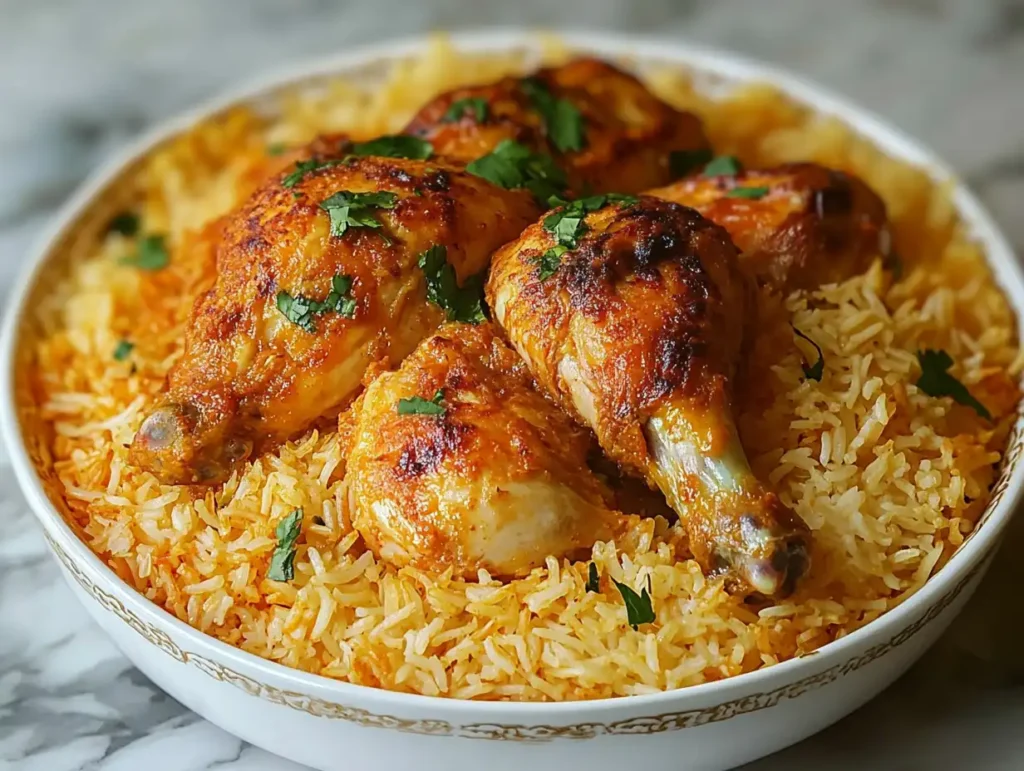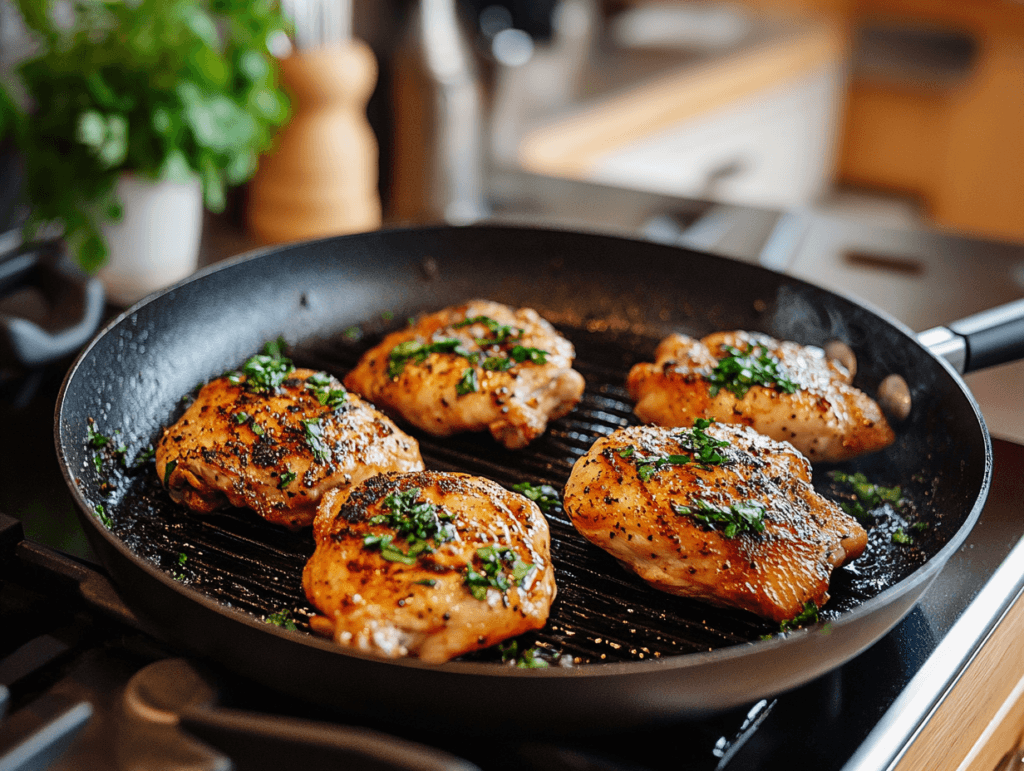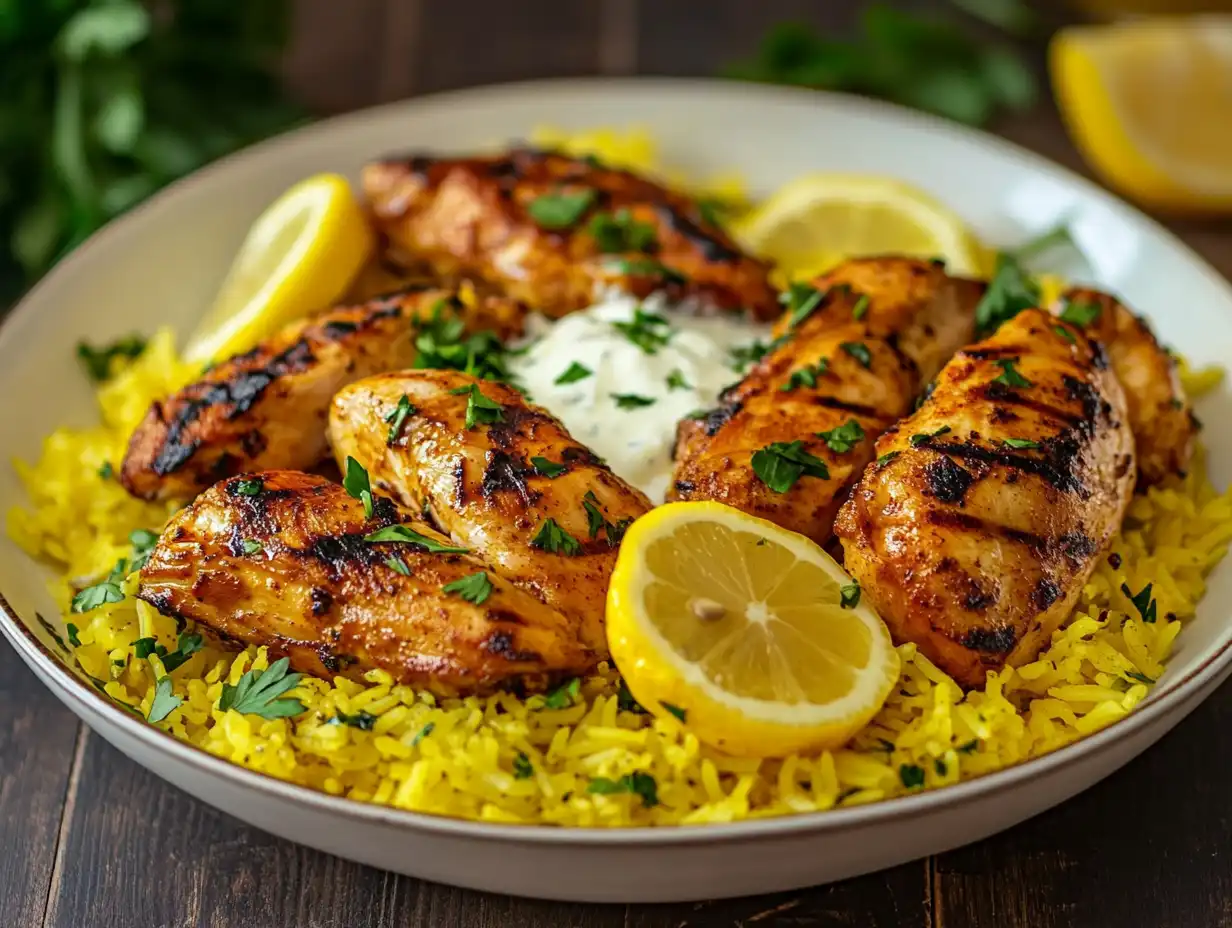Chicken over rice is a beloved dish that combines tender, flavorful chicken with aromatic, perfectly cooked rice. Often served with tangy white sauce and spicy hot sauce, this iconic meal is known for its unique combination of flavors and textures. Originating from Middle Eastern and Mediterranean cuisines, chicken over rice has evolved into a street food sensation, especially in urban areas. This article delves into its rich history, a detailed recipe, and why it has captured the hearts and taste buds of food lovers worldwide.
Table of Contents
Origins and History
Chicken over rice has deep cultural roots, tracing back to Middle Eastern and Mediterranean cuisines. The dish was inspired by traditional platters like shawarma and kebabs served over spiced rice. In these regions, rice serves as a staple food, often paired with marinated meats and a variety of sauces or pickled vegetables.
The migration of this culinary concept to the West, particularly the United States, brought significant transformation. In cities like New York, food vendors began serving simplified versions of the dish, tailored to appeal to a diverse customer base. What started as a street food option for busy workers and immigrants quickly became a global phenomenon.
Food carts in urban centers often serve chicken over rice as an affordable, convenient, and satisfying meal. It has since become a staple for food enthusiasts, celebrated for its robust flavors, hearty portions, and ability to be customized with different sauces and toppings.
Ingredients Needed

To create this iconic dish, you’ll need a combination of fresh, high-quality ingredients. To begin with, the chicken is a key component, and many recipes recommend using thighs for their juiciness and flavor. However, for a leaner alternative, chicken breasts can work just as well. In addition to the meat, a well-rounded marinade is essential. Typically, yogurt, lemon juice, olive oil, garlic, cumin, coriander, paprika, and turmeric are combined to create a flavorful base. Moreover, adding a pinch of cayenne pepper can give the chicken a slight kick, which is perfect for those who enjoy a bit of heat.
Equally important is the choice of rice. Most often, basmati or long-grain rice is used because of its light, fluffy texture, which complements the chicken and sauces. Furthermore, seasoning the rice with butter, turmeric, and bay leaves adds an aromatic layer to the dish. Additionally, chicken broth is commonly used in place of water, ensuring the rice absorbs maximum flavor as it cooks.
Lastly, the dish wouldn’t be complete without vegetables, sauces, and optional garnishes. Diced tomatoes, cucumbers, and onions add freshness, while white sauce and hot sauce bring depth and contrast. For added flair, toppings such as pickled vegetables or fresh parsley can elevate the dish. Altogether, these ingredients work harmoniously to create a meal that is both flavorful and visually appealing.s.
Variations of the Dish
Chicken over rice is a dish that has evolved into numerous exciting variations, each reflecting the preferences of different regions. While the traditional version hails from Middle Eastern and Mediterranean cuisines, modern adaptations reflect the diverse preferences of food lovers worldwide. For example, Mediterranean-style chicken over rice emphasizes fresh herbs like oregano and parsley, giving the dish a light and aromatic quality. Additionally, this variation often features lemon-infused rice and toppings such as feta cheese or olives, which enhance its tangy and savory flavors.
On the other hand, South Asian-inspired chicken over rice incorporates bold spices such as garam masala, cardamom, and cloves. Not only do these spices add a warm and robust flavor, but they also highlight the influence of Indian and Pakistani cuisines on this dish. Furthermore, the rice is frequently cooked with saffron, lending it a fragrant and vibrant quality that pairs beautifully with spiced yogurt-marinated chicken.
For those who prefer the American street food version, simplicity and bold flavors take center stage. Vendors often focus on smoky, well-seasoned chicken paired with mildly spiced rice. Moreover, the iconic white sauce and hot sauce combination defines this style, ensuring a perfect balance of creaminess and heat.
Finally, for health-conscious or vegetarian individuals, there are plenty of creative alternatives. For instance, grilled tofu or chickpeas can easily replace the chicken, providing a plant-based source of protein. Similarly, substituting white rice with quinoa or cauliflower rice makes the dish lighter while retaining its satisfying essence. As a result, chicken over rice remains a versatile and adaptable dish suitable for any dietary preference.
Nutritional Information
Understanding the nutritional value of this popular dish is essential for health-conscious eaters. Below is a typical breakdown for one serving (approximately 500 grams), including the protein, rice, and sauces:
| Nutrient | Amount per Serving |
|---|---|
| Calories | 600-800 kcal |
| Protein | 35-40 grams |
| Carbohydrates | 50-60 grams |
| Fat | 20-25 grams |
| Fiber | 4-6 grams |
| Sodium | 800-1000 mg |
Tips for Making It Healthier:
- Use skinless chicken breast: Reduces fat content without compromising protein.
- Opt for brown rice or quinoa: Boosts fiber and nutrients.
- Limit sauce portions: While delicious, sauces are often high in calories and sodium.
- Add more vegetables: Incorporating a variety of vegetables increases fiber and vitamins.
Balancing the dish with mindful ingredient choices allows you to enjoy its flavors while maintaining a nutritious diet.
Serving Suggestions

Chicken over rice is a complete meal on its own, but thoughtful accompaniments can elevate the dining experience. Here are some serving suggestions:
1. Side Dishes:
- Pita Bread: A soft, warm pita is perfect for scooping up the flavorful chicken and rice.
- Hummus or Baba Ganoush: Creamy dips that pair beautifully with the spices in the dish.
- Tabbouleh Salad: A refreshing, herbaceous salad to balance the richness of the meal.
2. Drinks:
- Mint Lemonade: A tangy and cooling drink that complements the dish’s spices.
- Iced Tea: Unsweetened or lightly sweetened tea cleanses the palate between bites.
3. Presentation Tips:
- Serve on a large platter for family-style dining.
- Garnish with fresh herbs like cilantro or parsley for a pop of color.
- Use colorful sauces in artistic drizzles to enhance visual appeal.
With these suggestions, chicken over rice transforms into a versatile meal suitable for casual dinners, festive gatherings, or on-the-go indulgence.
Popular Sauces and Toppings
One of the most exciting aspects of chicken over rice is the wide variety of sauces and toppings that enhance its flavors. These additions not only allow for endless customization but also elevate the dish from simple to extraordinary. Let’s dive into some of the most popular choices:
1. White Sauce
Undoubtedly the most iconic topping, white sauce is creamy, tangy, and slightly garlicky. Typically, it’s made with mayonnaise, yogurt, lemon juice, and garlic, which come together to create a rich and cooling complement to the spices in the dish. Furthermore, some versions incorporate a splash of vinegar or a pinch of sugar, adding another layer of flavor complexity.
2. Hot Sauce
For spice lovers, hot sauce is an absolute must. This bold addition, often made with chili paste, vinegar, and spices, brings heat and vibrancy to the dish. Additionally, its intensity can be easily adjusted, making it suitable for both mild and adventurous palates.
3. Pickled Vegetables
When it comes to balance, pickled vegetables are key. Options like pickled onions, cucumbers, or turnips deliver a tangy, refreshing crunch that contrasts perfectly with the richness of the dish. Moreover, their bright acidity ensures each bite feels light and flavorful, complementing the chicken and rice seamlessly.
4. Fresh Herbs
Fresh herbs, such as cilantro, parsley, or mint, play a vital role in enhancing both the flavor and visual appeal of the dish. Not only do they introduce a burst of freshness, but they also act as a natural garnish that ties all the elements together.
5. Crunchy Toppings
Texture is another essential component, and crunchy elements bring the dish to life. For instance, fried onions, toasted nuts, or crispy pita chips add a satisfying crunch that contrasts with the softness of the chicken and rice. Consequently, these toppings make every bite more dynamic and enjoyable.
In conclusion, the sauces and toppings you choose can completely transform chicken over rice, ensuring that each serving is as delicious as it is versatile.
Chicken Over Rice as Street Food
Chicken over rice has become synonymous with urban street food culture, especially in cities like New York.. It’s known for its affordability, portability, and satisfying portions. Let’s explore its popularity as a street food sensation:
1. The New York Food Cart Phenomenon
The dish gained fame through food carts run predominantly by Middle Eastern immigrants. These vendors tailored traditional recipes to suit the fast-paced lifestyle of urban dwellers. For just a few dollars, customers could enjoy a hearty meal packed with bold flavors.
2. A Global Street Food Star
Today, chicken over rice is not limited to New York. It’s found in cities across the globe, from London to Dubai, often with regional twists. The accessibility of this dish makes it a favorite among students, office workers, and food adventurers.
3. The Appeal of Street Food
Part of the charm of chicken over rice lies in its preparation right before your eyes. Watching the sizzling chicken on the grill and the artful drizzle of sauces adds to the overall experience. This sensory connection makes the dish more than just a meal—it’s a street food ritual.
Street vendors have played a pivotal role in popularizing chicken over rice, ensuring its place as a global comfort food.
Homemade vs. Restaurant Style

Making chicken over rice at home and ordering it from a restaurant or food cart offers distinct experiences. Here’s a comparison:
1. Homemade Advantages:
- Customization: You can adjust the spices, sauces, and toppings to suit your preferences.
- Quality Control: Using fresh, high-quality ingredients ensures a healthier version.
- Cost-Effective: Preparing the dish at home is often more economical, especially for larger portions.
2. Restaurant and Food Cart Benefits:
- Authenticity: Vendors often have time-tested recipes that are difficult to replicate.
- Convenience: No preparation or cleanup is required—perfect for a quick meal.
- Atmosphere: Enjoying chicken over rice in a bustling food truck line or a cozy restaurant adds to the overall experience.
Ultimately, both options have their charm, and the choice depends on your mood, time, and resources.
Tips for Beginners
For first-time cooks, preparing chicken over rice might seem daunting. Follow these tips to ensure success:
- Marinate the Chicken Properly: Let the chicken marinate for at least 2 hours to infuse it with flavor. Overnight marination is even better.
- Rinse the Rice: Washing the rice until the water runs clear removes excess starch, ensuring fluffy grains.
- Cook in Batches: If making a large quantity, cook the chicken in batches to prevent overcrowding in the pan.
- Taste as You Go: Adjust seasoning in both the chicken and sauces during preparation to match your desired flavor profile.
- Invest in Quality Spices: Fresh, aromatic spices make a significant difference in the final taste of the dish.
- Presentation Matters: Arrange the dish neatly and garnish with vibrant toppings to enhance its visual appeal.
Following these tips, even beginners can create a dish that rivals restaurant-quality chicken over rice.
Storing and Reheating
Chicken over rice is a dish that reheats well, making it ideal for meal prep or leftovers. To maintain its flavors and textures, follow these storage and reheating tips:
1. Storing Leftovers:
- Separate Components: Store the chicken, rice, and sauces in separate airtight containers. This prevents the rice from becoming soggy and preserves the freshness of the sauces.
- Refrigeration: Keep the containers in the refrigerator for up to 3-4 days.
- Freezing: For longer storage, freeze the chicken and rice. Avoid freezing the sauces, as they can separate when thawed.
2. Reheating Instructions:
- Microwave: Place the chicken and rice in a microwave-safe dish. Cover it with a damp paper towel to prevent drying out. Heat in 30-second intervals, stirring in between for even warming.
- Stovetop: Reheat the rice in a pan with a splash of chicken broth or water to restore moisture. Warm the chicken in a separate pan over low heat.
- Oven: Preheat the oven to 350°F (175°C). Spread the chicken and rice on a baking tray, cover with aluminum foil, and heat for 10-15 minutes.
Tips for Best Results:
- Add fresh toppings and a drizzle of sauce after reheating to refresh the dish.
- Avoid overcooking during reheating, as this can make the chicken dry and the rice mushy.
Proper storage and reheating methods ensure your chicken over rice retains its deliciousness for days.
Frequently Asked Questions (FAQs)
1. What kind of rice is best for chicken over rice?
Long-grain varieties like basmati or jasmine rice work best due to their fluffy texture and ability to absorb flavors.
2. Can I make the dish spicy without hot sauce?
Yes, you can add cayenne pepper or red chili flakes to the chicken marinade or cook the rice with spicy seasonings for an extra kick.
3. How do I make the dish gluten-free?
Use gluten-free soy sauce in the marinade and ensure all spices and sauces are free from gluten-containing additives.
4. Can I prepare chicken over rice in advance?
Yes! You can marinate the chicken and cook the rice in advance. Reheat and assemble the dish when ready to serve.
5. What are some vegan alternatives for chicken over rice?
Grilled tofu, tempeh, or roasted chickpeas can replace chicken. Use plant-based yogurt and mayonnaise for the sauces.
6. Is chicken over rice suitable for kids?
Absolutely! You can tone down the spices and hot sauce to make it kid-friendly. Adding a mild white sauce and colorful veggies can make it appealing to children.
Related Recipes
If you enjoy chicken over rice, here are some related dishes you might want to try:
- Chicken Shawarma Bowls: Similar to chicken over rice, this dish features marinated chicken served with rice, hummus, and pickled vegetables.
- Beef Kofta Over Rice: Swap the chicken for flavorful spiced beef meatballs paired with aromatic rice and sauces.
- Vegetarian Falafel Platters: Crispy falafel served with rice, tzatziki sauce, and fresh veggies offers a delicious plant-based alternative.
- Grilled Chicken Gyro Wraps: A handheld version featuring marinated chicken wrapped in pita with rice and tangy white sauce.
- Persian Saffron Rice with Chicken: This dish emphasizes the floral notes of saffron, complemented by tender chicken and barberries.
These recipes provide a wide range of options for exploring similar flavors and culinary styles.
Conclusion
This “Chicken Over Rice Recipe” is a testament to the versatility and global appeal of simple yet flavorful dishes. By incorporating fresh ingredients, vibrant spices, and creative toppings, you can craft a meal that’s both satisfying and adaptable. And don’t forget to explore our other recipes for more exciting culinary ideas, such as Healthy Black Bean Noodles, What Culture is Chicken Over Rice? and Mini Pancakes.

